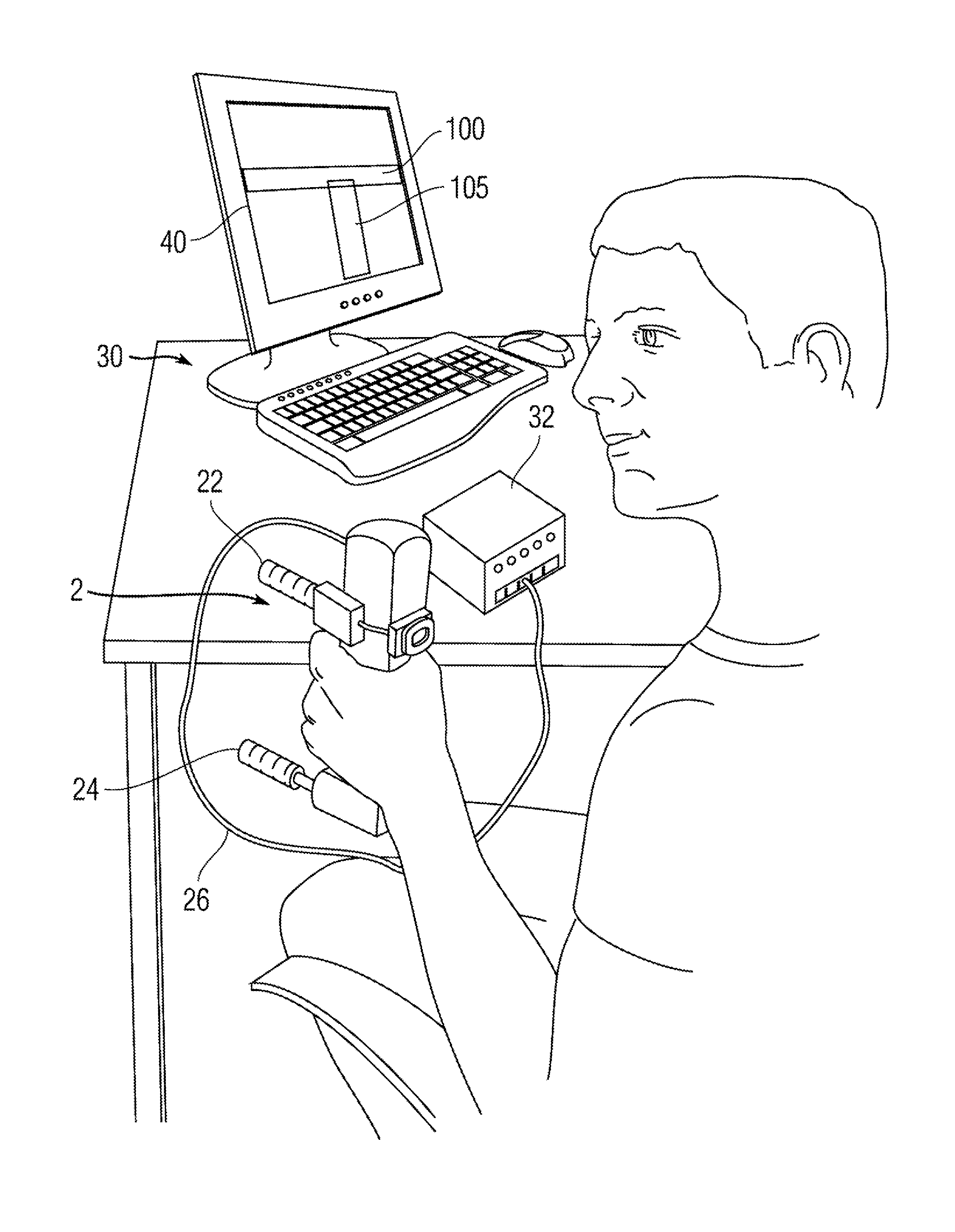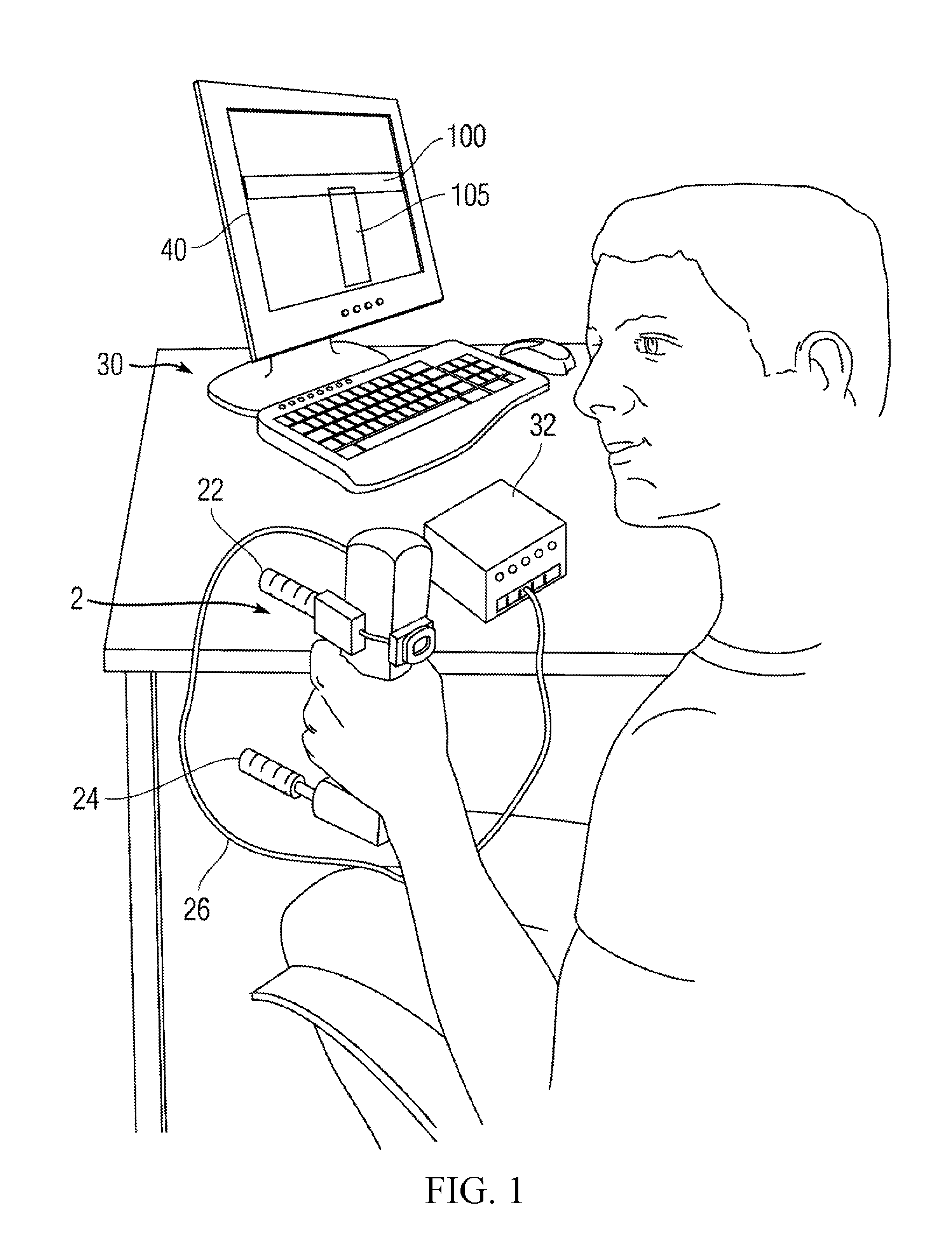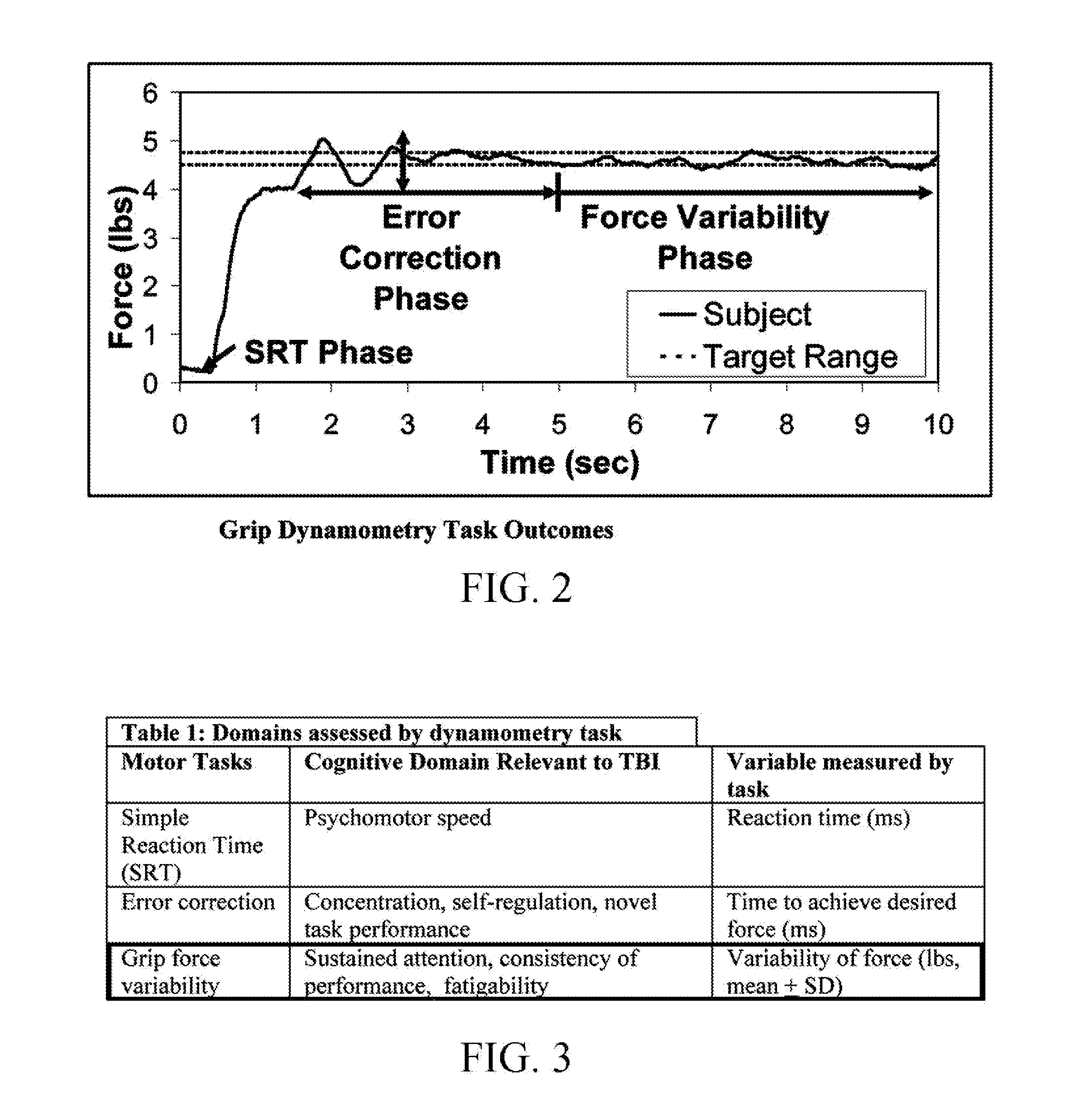Method and system of rapid screening for mild traumatic brain injury (MTBI) and other cognitive impairment by analysis of intra-individual variability of motor performance
a technology of intra-individual variability and motor performance, applied in the field of clinical screening techniques for identifying cognitive impairment, can solve the problems of serious consequences if left undiscovered, mild cognitive impairment (mci) that can compromise performance, and difficult detection of mtbi, and achieve the effect of reliably discriminating subtle cognitive impairmen
- Summary
- Abstract
- Description
- Claims
- Application Information
AI Technical Summary
Benefits of technology
Problems solved by technology
Method used
Image
Examples
Embodiment Construction
[0026]The present invention is a non-invasive system and method for simple, quantitative screening for mild cognitive impairment due, for example, to post traumatic stress disorder (PTSD), mild traumatic brain injury (mTBI), and other neurological disorders. The invention relies on a quantitative measure of intra-individual variability of motor performance for the screening.
[0027]For purposes of the present application a “screen” is a diagnostic test designed to identify individuals having an increased risk of the disorder, but typically does not provide a clinical diagnosis. The invention is proven effective as a screening tool for mTBI, and shows promise in screening other cognitive impairments such as brain damage, concussion, sleep deprivation, intoxication and the like. Moreover, the invention may potentially be used alone or in combination with one or more other assessments for positively diagnosing mTBI or other cognitive impairments.
[0028]FIG. 1 is a perspective view of an e...
PUM
 Login to View More
Login to View More Abstract
Description
Claims
Application Information
 Login to View More
Login to View More - R&D
- Intellectual Property
- Life Sciences
- Materials
- Tech Scout
- Unparalleled Data Quality
- Higher Quality Content
- 60% Fewer Hallucinations
Browse by: Latest US Patents, China's latest patents, Technical Efficacy Thesaurus, Application Domain, Technology Topic, Popular Technical Reports.
© 2025 PatSnap. All rights reserved.Legal|Privacy policy|Modern Slavery Act Transparency Statement|Sitemap|About US| Contact US: help@patsnap.com



